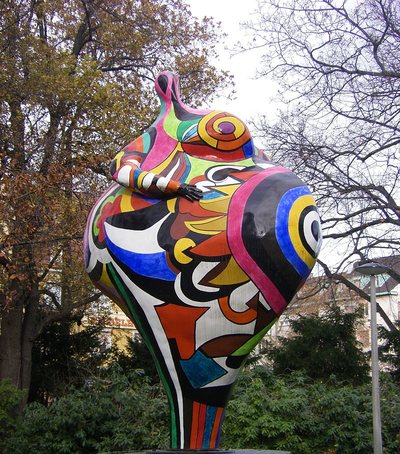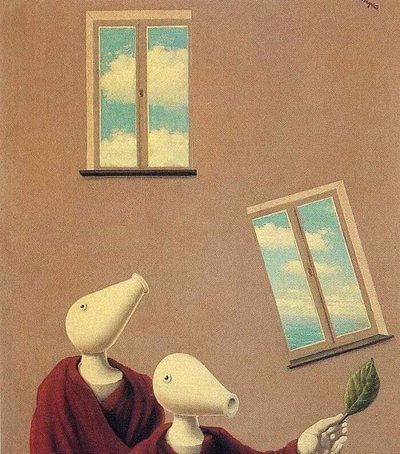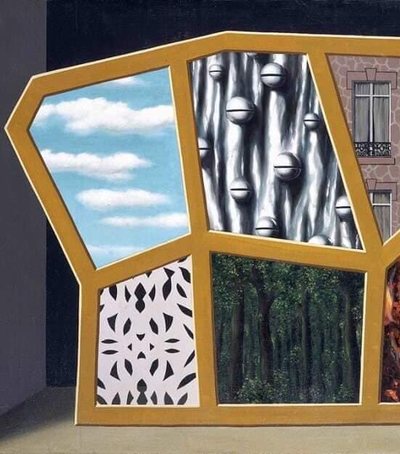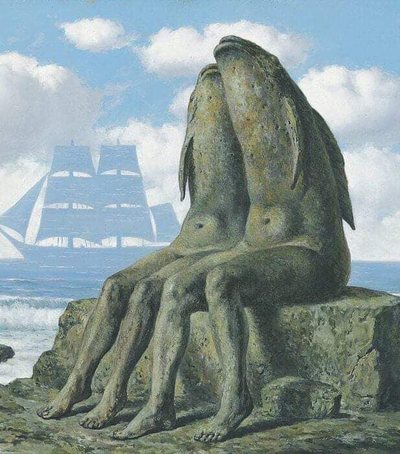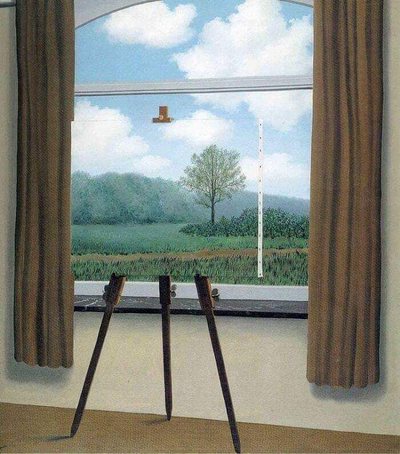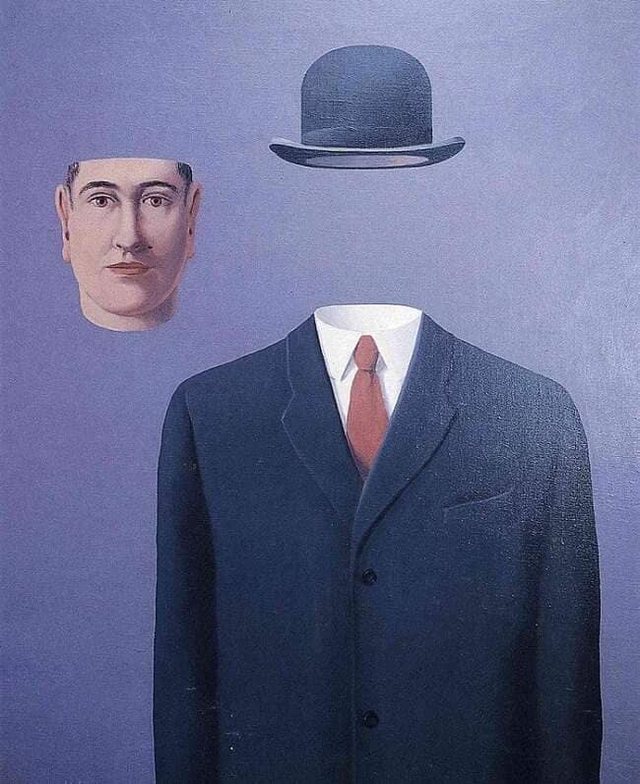
Magritte wanted to cultivate an approach that avoided the stylistic distractions of most modern paintings. Although other surrealists such as Max Ernst, Man Ray, and Salvador Dali experimented with new techniques, Magritte chose a calmer, illustrative technique that clearly articulated the content of his paintings.
Repetition was an important strategy for Magritte, helping him not only to deal with motifs in individual paintings but also encouraging him to produce multiple copies of some of his greatest works. His interest in the idea stemmed in part from Freudian psychoanalysis, which saw repetition as a sign of trauma. But his work in commercial art may also have played a role in prompting him to question the traditional modernist belief in the unique and original work of art.
The illustrative quality of Magritte's paintings often results in a powerful paradox: images that are beautiful in their clarity and simplicity, but also provoke disturbing thoughts. They seem to declare that they conceal no mystery, and yet they are wonderfully strange.

